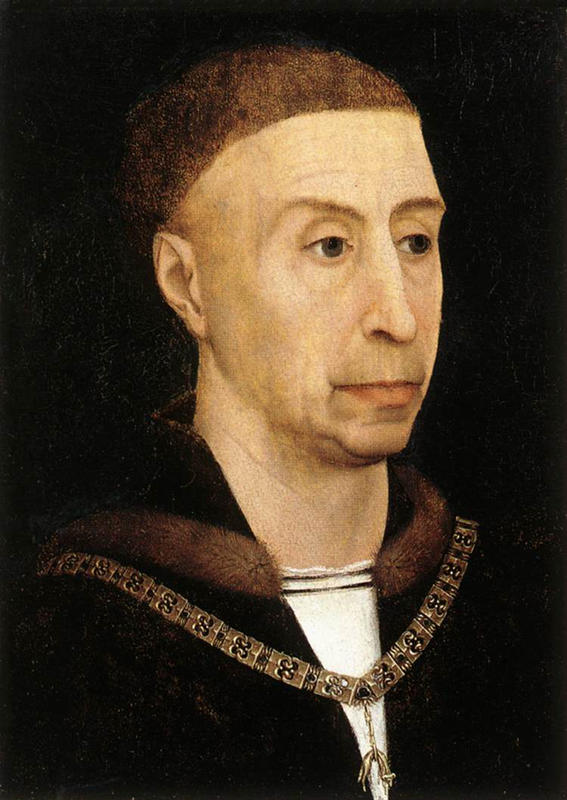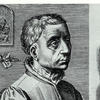Style inspiration Philip the Good’s outfit of the day circa 1450. #OOTD
Philip the Good was the Duke of Burgundy from 1419 until his death in 1467. Engaged at the age of 8 and married by twelve, Philip was quite the 13th century player. His second wife was the widow of his uncle (to put it plainly: the dude married his aunt) and his third wife, Isabella of Portugal, gave birth to his three sons. Philip also had at least eighteen other children with his reported 24 mistresses.
Depicted around Philip’s neck is the emblem of the Order of the Golden Fleece, which he founded in 1430. This sweet chain represents the noble ideals of knightly chivalry. It’s also a total testament to Philip’s knack for accessorizing.
Despite his cringe-worthy haircut, Philip’s court was widely regarded as the pinnacle of good taste and fashion in Europe. Under his rule, the Netherlands became a hub of Renaissance culture and style. Philip is particularly well known for his patronage of Flemish artists, which quickly propelled the Netherlands to the forefront of the art world.
Beginning in 1441, the sizeable court of the Burgundy aristocracy was based in Brussels, which attracted a number of master artists to the area. The artist of this portrait, Brussels resident Rogier van der Weyden, was commissioned to paint both Philip the Good and his son Charles, as well as several other members of the court.
Rogier van der Weyden was not a realist. Instead, he tried to create an idealized image of the subject within his portraits. Needless to say, this was an incredibly popular approach for the aristocracy and wealthy bourgeoisie of the time.They wanted to look hot, and van der Weyden happily delivered. But if this is the idealized version of Philip, we’re a little surprised he had so much luck with the ladies.





















As per Louisa ‘ if this is the idealized version of Philip, we’re a little surprised he had so much luck with the ladies.’ To that I would say 1) it’s good to be a duke, and 2) some people are saying that there are ladies who will overlook ridiculous hairstyles provided that there is money involved (for a contemporary example I refer you to Trump/Melania)